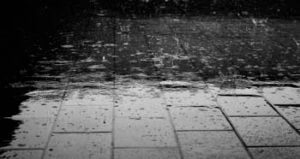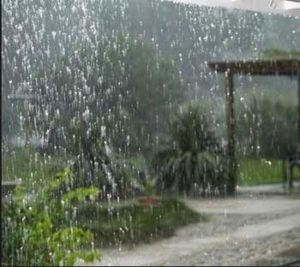How we go about planning and building our garden pond goes a long way toward it’s ultimate success. The quality of water is a good measure of how well a pond has been built and maintained. This is evident in the health of fish and other living creatures inhabiting it. Where you site your pond and how well you maintain the surrounding landscape also contribute to the health of a pond. Ultimately you would want a low maintenance pond which sparkles with health and vitality.
 So, what is the relevance of all this? To put it simply, as our towns and cities expand so does the amount of impervious ground cover over which rain has to pass before going down a storm water drain or finding ground it can seep into. Our gardens are no different with patios and driveways having a negative impact during periods of high rainfall. Rainwater run-off is precipitation that doesn’t soak into the ground. This can be due to the ground being saturated, having a non-porous soil type or man-made surfaces preventing water being absorbed into the ground. Rainwater run-off can become a problem when it carries with it leaves and other debris. If this water should then flow into your pond it will affect the health of your pond by reducing the waters oxygen levels.
So, what is the relevance of all this? To put it simply, as our towns and cities expand so does the amount of impervious ground cover over which rain has to pass before going down a storm water drain or finding ground it can seep into. Our gardens are no different with patios and driveways having a negative impact during periods of high rainfall. Rainwater run-off is precipitation that doesn’t soak into the ground. This can be due to the ground being saturated, having a non-porous soil type or man-made surfaces preventing water being absorbed into the ground. Rainwater run-off can become a problem when it carries with it leaves and other debris. If this water should then flow into your pond it will affect the health of your pond by reducing the waters oxygen levels.
We plant and fertilize our flower beds, shrubs and lawns. But, in the process we change the environment by adding nutrients and organic matter to the soil. These can all have an unintended negative impact on the water in our garden ponds, lakes and streams. Polluting our waterways affects the health of all living creatures that inhabit it. Sudden down pours of rain can cause flash flooding which can carry silt, grass clippings and other debris that lead to murky water. Lawn fertilizers contain chemicals that can support algae growth or harm aquatic plants and fish. There are, however changes that we can make to reduce run-off in our own gardens.
Careful selection of where you site your pond is an important step to avoid pond water health problems. The ground around a pond should hold sufficient clay content to retain water. 
How to reduce rainwater run-off into your pond
- minimize man-made impervious surfaces
- plants absorb water so grow sufficient to cover your flower-beds
- native plants have extensive root systems so include these in your garden to absorb rainwater before it becomes ‘run-off’
- dig organic matter into your flower beds – plants will also grow faster and have a greater impact in reducing run-off
- reduce slope of garden to restrict the risk of run-off
Man-made rainwater run-off prevention
If the above mentioned steps are not sufficient in preventing runoff, you can protect your pond by digging a slight ridge around it. The ridge doesn’t have to be very high. If the pond is on an incline, you can create a shallow channel with a slight slope to divert runoff to a flowerbed.
The impact of Global weather changes on Great Britain has seen periods of dry spells followed by heavy and persistent downpours – it is these that can affect the health of our ponds so we hope the tips offered in this article prove helpful.
For more steps to building a healthy garden pond, visit this article on our website >> Pond planning and Construction





